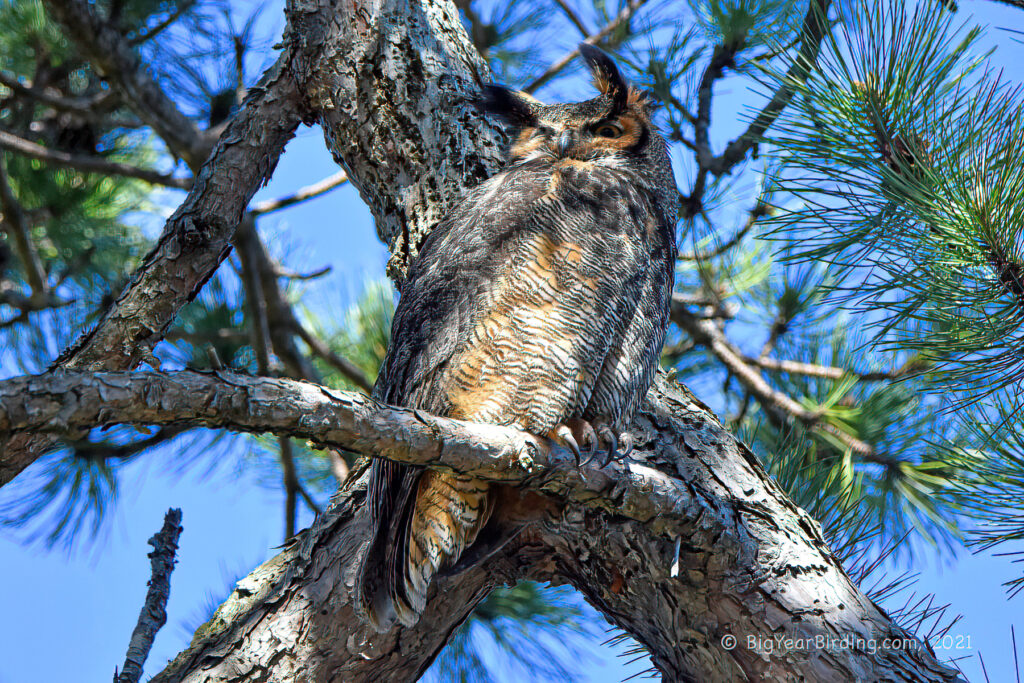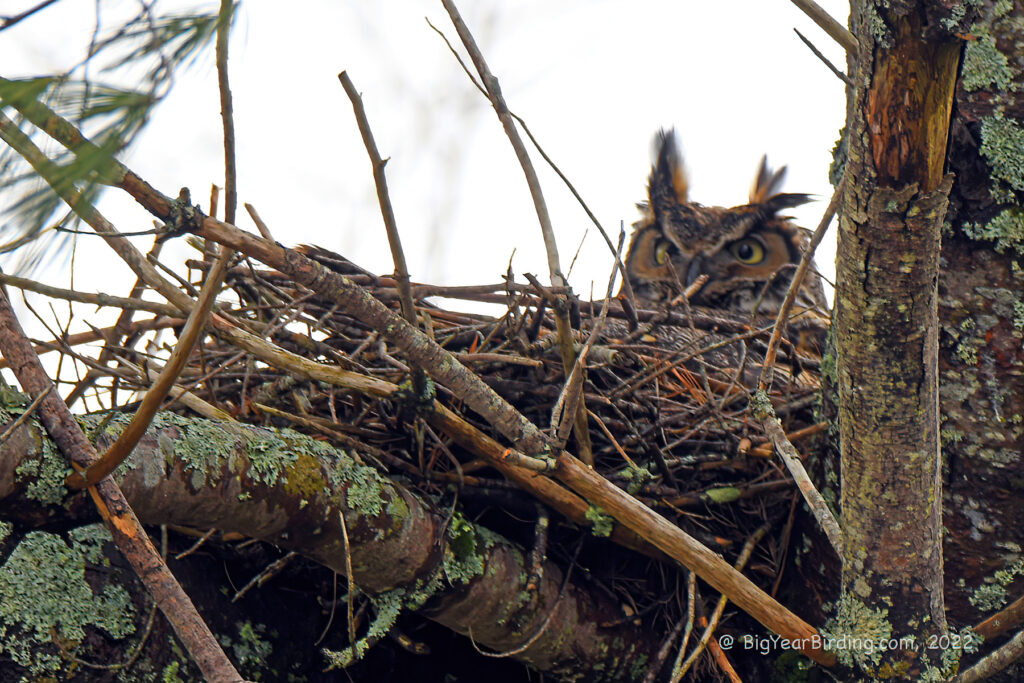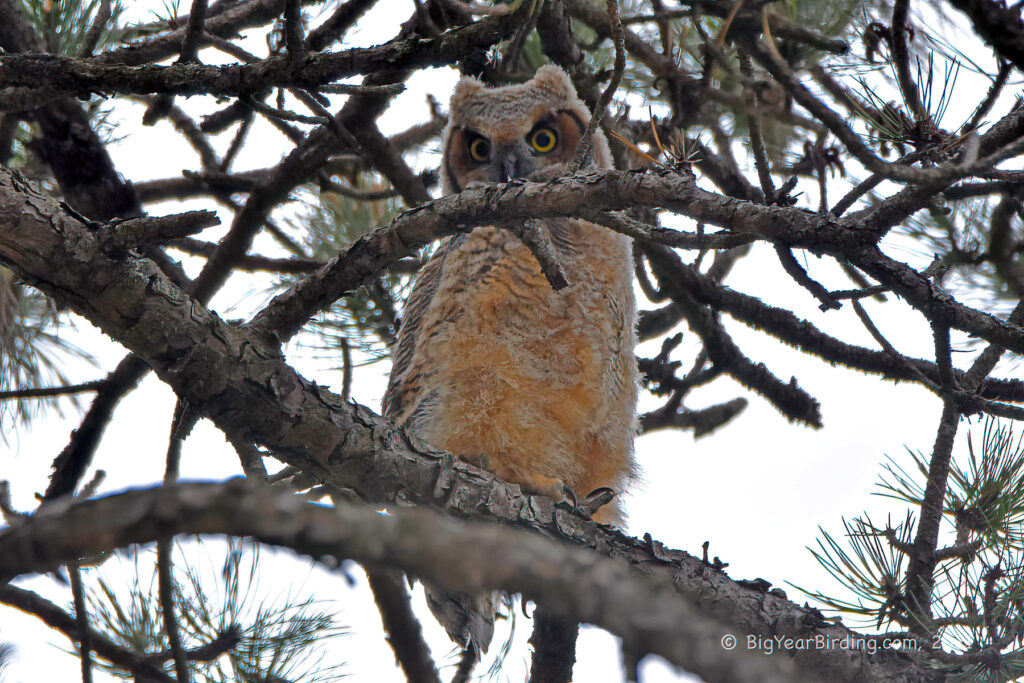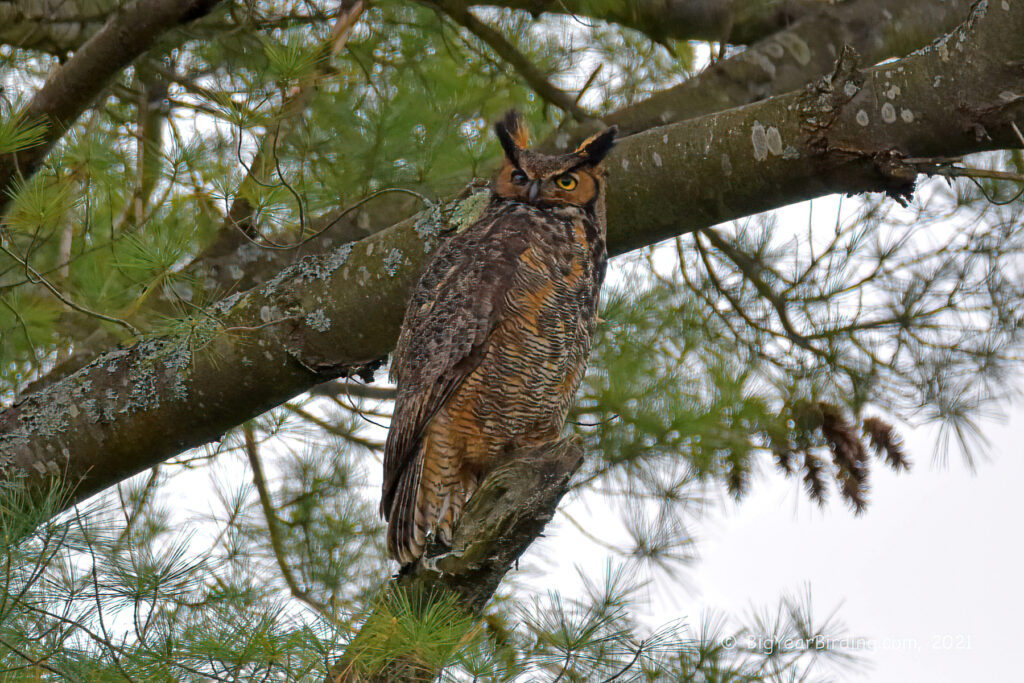
The Great Horned Owl (Bubo virginianus) is a large, powerful bird of prey that can be found throughout the Americas. These owls are one of the largest species in North America, measuring between 18 to 25 inches (46 to 63 cm) in length and weighing between 2 to 5.5 pounds (0.9 to 2.5 kg). They have a wingspan of 3.3 to 4.8 feet (1 to 1.5 meters), making them one of the most formidable predators in the avian world.

The Great Horned Owl is easily recognized by its distinctive ear tufts, which resemble horns or cat-like ears. They also have large, yellow eyes with a prominent facial disk that helps to focus sound waves to their ears for better hearing. These birds have a mottled brown and white plumage that provides excellent camouflage in their forested habitats. They have powerful talons and a sharp, curved beak, making them formidable hunters.
Great Horned Owls are non-migratory birds that can be found throughout North, Central, and South America. They are adaptable to a wide range of habitats, including forests, deserts, and even urban areas. They are most commonly found in wooded areas where they can hunt for small mammals, birds, and reptiles. They are also known to feed on larger prey, such as rabbits, skunks, and even domestic cats.
Breeding season for Great Horned Owls varies depending on their location, but it generally occurs between December and March. These birds mate for life and will typically use the same nesting site year after year. The female lays 1 to 4 eggs, which she incubates for around 30 days. The chicks hatch and are cared for by both parents until they are old enough to hunt on their own. Great Horned Owls are known for their fierce defense of their nests and will attack intruders, including humans, if they feel threatened.

Overall, the Great Horned Owl is an impressive bird of prey with many unique adaptations that make it an effective hunter. With its powerful talons, sharp beak, and excellent hearing and vision, it is no wonder that this bird is one of the most successful predators in the Americas.

